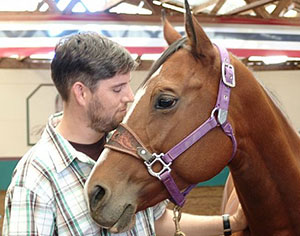blindness in dogs and cats
Share This Everywhere!
 Get More Pet Tips
Get More Pet Tips
Content provided Pet Talk with Dr. B is meant for educational purposes on health care and medical issues that may affect pets and should never be used to replace professional veterinary care from a licensed veterinarian. This site and its services do not constitute the practice of any veterinary medical health care advice, diagnosis or treatment.
BLINDNESS IN DOGS AND CATS
Blindness can occur in pets either gradually or suddenly. When blindness occurs gradually, the pet is usually able to adapt to their surroundings due to their heightened senses of hearing and smell. A pet can very easily memorize the interior of a house or the layout of a backyard. Owners may not even know their pet is blind until the pet’s surroundings change, such as when furniture is moved or the pet is taken to a completely new location. Once in an unfamiliar setting, the pet may be very hesitant or bump into furniture or objects, making it obvious to the owner that the pet cannot see.
Acute loss of vision can cause anxiety in a pet. A pet may begin to bump into walls or doors and be confused by the sudden change. Gradually, over a period of 1-3 months, a pet should be able to adapt to his or her new environment and use other situations and familiarity of the environment to have a quality life. It important to remember that positive encouragement and plenty of reassurance is needed to help your pet adjust to his or her new environment.
Following are simple tips that may help your pet compensate after becoming blind:
- Keep the routine walking paths that your pet uses free of toys, chairs, or other obstacles.
- Gate dangerous areas, such as stairs, open doors, or swimming pools, to prevent an accident.
- Teach your pet commands such as “easy” so that when approaching crowded or unfamiliar areas, he or she is cautious and slow.
- Tap an obstacle that is nearby so that your pet recognizes the object. Remember to offer positive reinforcement and praise once your pet has navigated the obstacle.
- Keep the furniture in place and do not rearrange it periodically to make it easier on your blind pet. This includes your pet’s bed, food, and water dishes. If a new piece of furniture is added, be sure to tap the furniture to alert your pet to the new obstacle. Don’t forget – plenty of reinforcement and praise once your pet navigates the new item.
- Keep your pet on a leash when entering a new environment to help them navigate the area. Once your pet is comfortable, you can take him or her off the leash to explore the area. Once again – plenty of reinforcement and praise!
- Blind pets can still go for walks. Switch from a collar to a harness so that your pet feels more comfortable, and be as consistent as possible on your walks. A pet will more quickly adapt to his or her surroundings if the path is the same each time.



